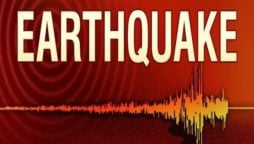

Study reveals Earthquakes aren’t only destructive it can act like batteries for underground life
A new study from the Guangzhou Institute of Geochemistry has revealed something truly surprising: earthquakes can power life deep underground.
The research shows that when earthquakes shake the Earth, they create chemical energy that supports tiny life forms microbes, living far below the surface in the Earth’s crust.
To understand this, scientists recreated earthquake-like conditions in the lab using quartz-rich rocks. They cracked and ground the rocks to simulate what happens during a quake. When they did this, water inside the rocks split into hydrogen gas and hydrogen peroxide, two chemicals that microbes can use to survive.
These chemicals trigger a process called iron redox cycling, which creates a steady flow of energy. This flow of electrons acts like fuel for microbes living in tiny cracks within rocks. The energy produced during these quakes was found to be up to 100,000 times more powerful than other known underground energy sources.
Scientists are calling this a kind of “natural underground power grid” where the movement of rocks turns into chemical energy, keeping life going without any sunlight.
This discovery also has big implications for life beyond Earth. If earthquakes can support life underground here, similar activity on planets like Mars or icy moons like Europa could do the same. These places may have underground environments rich in energy where alien microbes could survive even without light or warmth.
Researchers now hope to find more places on Earth and in space where such energy-producing reactions might occur. This study opens new doors in the search for life in extreme or hidden places and challenges what we thought we knew about how life can exist.







